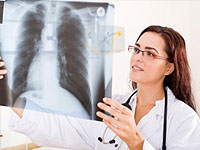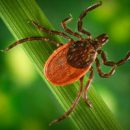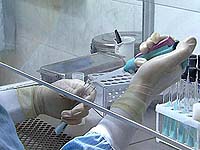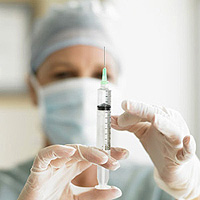According to preliminary data of CNIII, at the end of 2013, 211.9 thousand in the Russian Federation. Patients with tuberculosis are less than in 2009, when there were 262.7 patients in the country. But a consistently high, the number of patients with multiple drug resistance of the pathogen of tuberculosis remains stable: 34 778 in 2013 (according to preliminary data of TsNIIOZ) against 34 838 in 2012.
Content
 These data indicate the existence of two multidirectional vectors. On the one hand, the improvement of diagnostic methods and therapeutic schemes leads to a decrease in the total number of patients with this highly contagious infectious disease. On the other hand, the number of drug resistant pathogens is growing, which, in turn, does not allow to talk about a satisfactory situation in the field of tuberculosis. Figures of morbidity in Russia are comparable to the data of the World Health Organization: In recent years, the incidence rate in EU countries also decreases by an average of 5% per year. However, the situation with a wide or multiple drug resistance remains difficult, the cure indicators of such patients are very low.
These data indicate the existence of two multidirectional vectors. On the one hand, the improvement of diagnostic methods and therapeutic schemes leads to a decrease in the total number of patients with this highly contagious infectious disease. On the other hand, the number of drug resistant pathogens is growing, which, in turn, does not allow to talk about a satisfactory situation in the field of tuberculosis. Figures of morbidity in Russia are comparable to the data of the World Health Organization: In recent years, the incidence rate in EU countries also decreases by an average of 5% per year. However, the situation with a wide or multiple drug resistance remains difficult, the cure indicators of such patients are very low.
WHO experts pay attention that countries with a high prevalence of drug resistant tuberculosis need to develop national programs to identify patients to assess the scale of the problem and take the necessary measures to treat such patients. One of the strategic goals in this area of WHO has an increase in the level of diagnosis of the disease, the introduction of modern high-precision techniques for the detection of tuberculosis, which corresponds to the main tasks facing the health of Russia. According to the main freelance phthisiart of the Ministry of Health of the Russian Federation Irina Vasilyeva, «Tuberculosis — The disease that slowly develops and slowly goes, it takes time to overcome it, as well as improving the diagnosis of the disease in order to prevent the appearance of resistant mycobacteria with a wide or multiple drug resistance».
The most important condition for the effective fight against tuberculosis, especially with its most severe drug-resistant forms, is a fast and accurate diagnosis that is necessary for timely start of treatment. Until now, treatment is often appointed before obtaining results of analyzes, the therapeutic scheme did not always mean the impact on a specific mycobacterial — Tuberculosis pathogen. Today, with the advent of the diagnosis with the use of liquid media techniques, the situation may change for the better. The method of liquid media is a breakthrough method of detecting the type of mycobacterium tuberculosis. It allows you to more quickly and accurately compared to traditional methods of microbiological diagnostics, determine the type of causative agent of the disease and assign such a therapeutic scheme that will be effective in each case. And this is especially important in the treatment of tuberculosis with wide and multiple drug resistance.
The World Health Organization in 2007 called the method of liquid media «Health care standard» in the diagnosis of tuberculosis. On October 28, 2013, a resolution of the Government of the Russian Federation was adopted about the financial support of measures aimed at preventing and treating tuberculosis, which means that medical institutions will have a real opportunity to improve diagnostic tools. It is assumed that after the adoption of federal clinical guidelines, diagnostics on liquid media will become mandatory in the isolating mycobacterium tuberculosis and the choice of therapeutic scheme.
BD General Director in Russia and the CIS Elena Chirkova emphasizes the importance of positive changes occurring in the field of tuberculosis control: «According to our data, the diagnostic technique on liquid media allows you to put an accurate diagnosis faster than when using traditional microbiological tests. The introduction of modern effective diagnostic methods requires the joint efforts of health organizers, representatives of science, clinicians, representatives of the medical industry. But these efforts, ultimately, can provide more accurate diagnosis, correct the appointment of therapy, and in addition — bring significant savings of budget funds, and in perspective — Promote a general improvement in the incidence of tuberculosis in the country».









